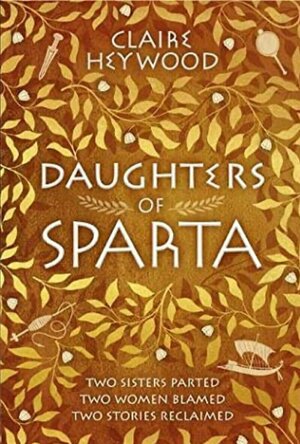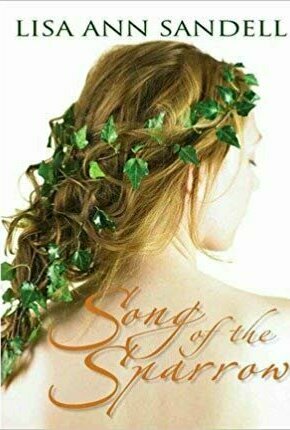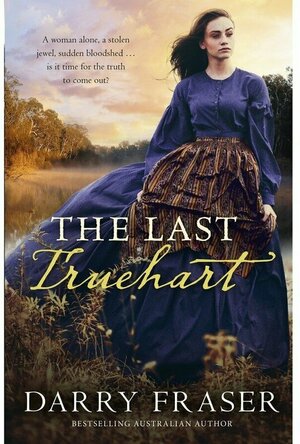
The Last Truehart
Book
1898, Geelong, Victoria. Stella Truehart is all alone in the world. Her good-for-nothing husband has...
ClareR (6054 KP) rated Daughters of Sparta in Books
May 21, 2023
First of all, these books read as historical fiction, NOT as myths. There are no gods or goddesses intervening in the lives of mortals, messing it all up. The mortals are all perfectly capable of doing that themselves.
Secondly, the women are strong in the context of the time they live in, not by our modern standards. Women were completely reliant on their husbands and families; sold off to the men who would most benefit their fathers. As is the case with Klytemnestra (spelt with a ‘K’ here, but it can be a ‘C’ as well!) and Helen.
To be fair, both women have a lot about them. Klytemnestra commits the ultimate two fingered salute to her husband, and Helen removes herself from the possibility of dying in childbirth. There’s also the fact that Helen seems to be constantly searching for affection and love. Denied both by her mother, she doesn’t get those things from her husband either, probably because they never get to know one another. And Paris certainly doesn’t show her love or affection once they get to Troy. She must feel supremely uncomfortable around the other women in Troy once the Greeks turn up and start killing all of their husbands.
Don’t get me wrong, I love the Greek myths where the gods are involved, but I really like this version too. Really very enjoyable, I raced through this book. I’m hoping that Claire Heywood has another retelling in the pipeline!
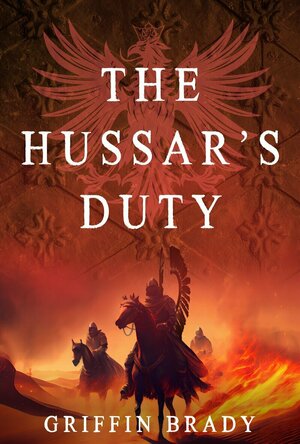
The Hussar's Duty (The Winged Warrior #3)
Book
Poland’s most valiant winged hussar is called to fight in a campaign ripe for disaster. But he...
Historical Fiction

The Virgins of Venice
Book
In sixteenth-century Venice, one young noblewoman dares to resist the choices made for her Venice...
Historical Fiction Women's Saga Renaissance
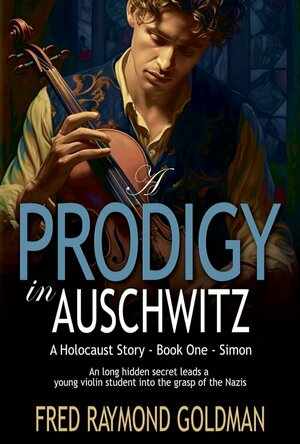
A Prodigy in Auschwitz: Simon
Book
When Nazi Germany troops enter Krakow, Poland on September 2, 1939, fourteen-year-old Simon Baron...
Historical Fiction WWII Auschwitz Jewish Survivor Story

The Persians
Book
A riotously funny and moving debut novel following five women from three generations of a once...
Historical fiction Iran
Connor Sheffield (293 KP) rated Black Sails - Season 1 in TV
May 30, 2017
This show is a great representation of the life and time of Piracy however, and I can review it from a point of view of someone who knows quite a bit about the golden age of piracy in actual historical facts. Unlike the previous pirate content I reviewed, Blackbeard, this show portrays pirates as scarred, dirty, bloody, and frightening in their own way. However, similar to the Blackbeard short series, the pirates and other characters all have near perfect teeth. It seems to be that only (in what I have seen anyways) the Pirate's of the Caribbean franchise has managed to nail the full historical accuracy of the look of a pirate from clothing, to makeup, to the teeth.
On the other hand, this does not cause much of a disturbance to the viewing of this show, because the drama is brilliant, if you can bare the somewhat slow plot lines unfold as there are many characters in this show, and each have a ship full of issues that all need resolving with very few of them actually being resolved. From love interests, to thievery, betrayal and all round general opposition between old allies and acquaintances. There is a lot of 'business' to deal with on the side of Eleanor Guthrie and her dealings with our main protagonists, among other important characters, some of which are based upon historical figures such as Captain Benjamin Hornigold, Charles Vane, Anne Bonny and Jack Rackham (known throughout history as Calico Jack). All portrayed as tough, cunning and sometimes (most times for Rackham) as humerous.
The production of this show is great, with beautiful sets, great looking props and special effects that make this a believable series to get lost in. It's one of the better pirate themed mediums that I have seen, and I personally really enjoy the drama and suspense of the episodes, as well as the twists and turns of certain scenario's which leave you wanting more.
The cast deliver great performances and make you believe that they are truly men or women to be feared, and not to be double crossed. From Charles Vane's tough exterior, to Eleanor Guthrie's power over trade in Nassau, and even Captain Flint's fear inducing presence, as we watch his secrets spill out into the hands of the wrong people.
This is a show I would recommend to anyone who enjoys the theme of pirates, with some fantasy and a lot of drama, but I should warn you, that it doesn't hold back with neither the nudity or the actions performed, during the state in which someone would be naked. Whether it's the whores in the brothel, or the few short term relationships between characters.
Minor Spoilers - nothing too important.
The first example you see of this extent of mature content, as well as some of the humour of this show, is when John Silver is taken into a whore house, and is told that 'Blackbeard' wishes to see him. When he enters, he finds a woman standing there, and as John Silver points out "You are not Blackbeard" only to discover that the beard, is revealed to be between her legs.
As I said, watch at your own risk but I would recommend it to anyone interested in the theme of Pirates during the Golden Age.
Becs (244 KP) rated Song Of The Sparrow in Books
Oct 2, 2019
Type: Stand-alone
Audience/ Reading Level: 12+
Interests: King Arthur and the Knights of the Round Table, Historical Reads, Lyricism, Poetry, Retellings.
Point of View: Third person
Promise: A tale of love, betrayal, and war.
Insights: I have no idea where or when I received/ got this novel. But ever since that day, Song of the Sparrow has been one of my favorite retellings of King Arthur and the Knights of the Round Table. My copy is very beaten up, so it’s gotten it’s many of read-throughs in. It also makes me think that I use to be pretty rough with my books. (what in the heck is wrong with you Becca! smh) I remember reading through SotS and thinking of myself as Elaine, the MC. Does anybody else do that? Because it hasn’t gone away with me.
I loved every aspect of this little novel. My favorite part was not only the retelling of King Arthur and the Knights but also how the novel was written in a sort of lyricism way, a lot like poetry. Novels written this way have always drawn my attention and I find them quite refreshing to read when in a slump or trying to get out of one.
Favorite Quotes: “I am Elaine daughter of Barnard of Ascolat. Motherless. Sisterless. I sing these words to you now, because the point of light grows smaller, ever smaller now, even more distant now. And with this song, I pray I may push back the tides of war and death. So, I sing these words that this light, this tiny ray of light and hope may live on. I dare not hope that I may live on too.”
“So long ago now. But you remind me of her, you know. Sometimes I forget that you are not she. Sometimes I forget that I should not blame you for leaving me. It was her. I was her.”
What will you gain?: A new telling of what life back in the olden days was like for a female in an all men village.
Aesthetics: Everytime I read-through Song of the Sparrow, I always stare at the cover. Something about it is just very appealing, not only to the eyes but also with the mind. Another aesthetic I found that I loved was how the story was written like lyricism/poetry.
“And at that moment, a lilting melody lifts to the moon as a single sparrow sings.”
Heather Cranmer (2721 KP) created a post
Nov 3, 2021
This book gives a very in-depth and detailed re-telling of the Battle of Gettysburg, and more specifically the charge of Barksdale himself. A battle and time that will live forever in history, Phillip Thomas Tucker weaves the death and grim reality of war with insightful quotes, maps and ideas about how this battle really occurred.
There are several outstanding aspects of this book, however first I feel it is necessary to warn any potential readers that this book is not that easy to read. I am a frequent reader of non-fiction books, and more specifically historical non-fiction, and this is amongst one of the hardest I have read, but the effort is well worth it. At times, it is just a little over loaded with details such as names, positions in the armies etc, and with the same names appearing in both sides of the battle as well as within the same units, it can get a little hard to keep track of everyone!
On a much more positive note though, the detailed research the author must have done truly does shine through on every page. The quotes from letters, the pictures and the maps, to name but a few things, really do add a whole new dimension to the book. Personally, it made it all seem a lot more real, helping me to engage more with the trials of those poor men (and horses) stuck in the mud and terror of that day. Although knowing all the names did get slightly confusing at times, it was a great touch in helping 'bring home' the reality and enormity of the loss at that battle.
In addition, the pace with which the events were told was pitched just right. Although packed with detail, the book still had a great pace and a pull to it. The action of the battle really does pour through the pages and come alive. It's written with great skill and is one of the best 'battle recounts' that I have read in a long time.
In conclusion, I can only praise this book for summarising one of the pivotal battles of the American Civil War. Detailed, at times a little too much so, and a compelling, engaging and at times emotional read that I would recommend to anyone who has an interest in this period of history, or who is studying this.
